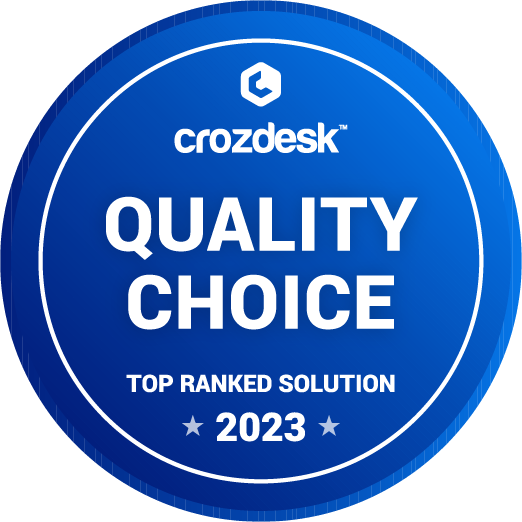PIM for banking and insurance: Opportunities
Last time, we were talking about the threats to financial companies arising from ineffective product management, product data fragmentation across individual systems, and business people’s inability to change the product offer efficiently. PIM can definitely help when time to market, costs of change and knowledge transfer are an issue.
But is this all that PIM can bring? Just high-quality product data easily managed from one place for low costs? Good, but … boring. Let’s also take a look at the new business opportunities which a proper PIM solution can bring when chosen and used to its potential.
Time-to-market
We already talked about it, but previously it was about “how not to be slow”. Now, let’s look at “how to be quick”. Quicker than your competitors when bringing a new product offer to the market.
Banking and insurance are quite stable businesses. They keep offering the same types of products over the years, differing maybe in their name, target customer group, different prices or some detailed parameters. But they are still loans, mortgages, and car insurance.
So, why do they always implement the same logic from the scratch, with every new product, when 90% of it has already been implemented many times before?
A good product catalog lets you use so-called business products. You can imagine them as generic templates for some repeating product types, eg. consumer loans or car insurance. You define their typical parameters, set up the ranges of allowed values, and implement their algorithms in the banking systems. Just once.
And when you want to create a new market product, you simply choose the best-fitting template, derive a market product and adapt it within the given boundaries exactly as you need. You set up the commercial texts, define its eligibility, target customer group, pricing, etc. But you only change the parts which differ from the template. You sell your market products but they use the same generic background.
This way, you can create a new proposition virtually within minutes, and as many times as you want. Of course, with proper testing afterwards, because we are still in a complex corporate organization, but product definition will not be the bottleneck anymore.
Automation in mass market – rules-based pricing
Most PIM systems focus on mastering the product data only. But this is usually not sufficient for banking and insurance. In these domains, pricing is a key and inseparable part of the product definition.
You may want to:
- offer postponed repayment for the first 3 months of the contract,
- offer a better interest rate to a loyal customer with good history or with insurance,
- give a current account for free to a client whose trades are worth millions to the investment branch of your company…
…And you need a tool for it. With the same flexibility for the pricing strategy definition as you have in the management of product parameters.
With a good PIM, you are able to define pricing business rules, which can then be effectively integrated directly into your digital sales processes.
Focus on the client instead of selling the product
Every product manager can understand the difference between a product-centric and a customer-centric sales approach. It is very easy to understand but very hard to achieve without a proper tool.
Let’s look at the rules-based pricing once more. Business rules can be used to calculate the profitability of the order continuously during the sales process. This provides the sales representative with crucial information on his selling options and corresponding approval limits at all times.
These business rules can work not only with the value of the order but, when properly integrated with a DWH, also with the customer lifecycle value in the long term across all products.
Any relevant information you have can be used by the business rules to build the most effective pricing strategy on the market.
Working with the client on a group level
Many companies are a part of some holding or a corporate group. But only very few of them can really utilize the synergies from being in a group.
Are you able to offer the products of your sister companies to your clients? Not, because your systems are not integrated? With a good PIM, you can. You can let your colleagues from the sister companies insert their products into your product catalog – with proper access rights and an approval process from your side, of course. And when you have them there, you can build shared product bundles and cross-sell strategies.
It is not that important how the order for such a combined product is processed in the end. You may automate the processing across multiple product providers or the sister company simply receives an email order and processes it manually. The first and the most important step to a group proposition has been made.
B2B potential
The integration synergies described above can work in B2B integration with your business partners as well.
You can easily incorporate the products of any partner on the market into your catalog and use them for a more attractive product offer for your customers. A wider product proposition for the clients can become a fundamental competitive advantage over your competitors while keeping the costs low.
B2B integration also opens new sales channels for you. Third-party marketplaces, distributors and other external sales channels can easily get access to your product data via the catalog API in a properly managed way. With a good PIM, your integration potential will be very high due to reliable data and a low cost of integration.
So, if I need a PIM, which one is the best?
In the product management area, more than anywhere else, it is crucial to know what we want to solve, what the priorities are, and what the processes should look like. No specific software will bring much improvement unless it’s used effectively. And for financial companies with a long history, this applies many times over.
It can seem to be an almost unsolvable problem to introduce PIM as a new component into their complex environments without a monstrous and highly risky project for a couple of years. But it can be done. With discipline and strong focus, but it can. We can look at some best practices and recommended steps in future articles.




